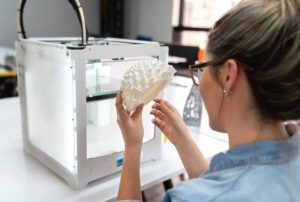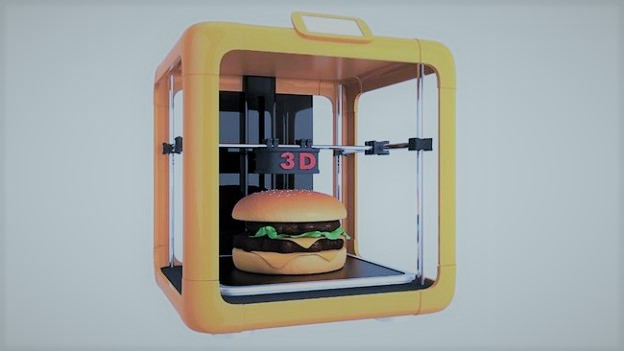3D Printing Australia and the Role it Plays in Manufacturing
 3D printing is essential that will certainly permit the manufacturing sector to reach its best capacity- mass personalization, dispersed production, and complete procedure control. Today, 3D printing is altering manufacturing by shortening turnaround time, decreasing price for reduced volume manufacturing, and supporting intricate styles which are difficult to create using traditional production methods.
3D printing is essential that will certainly permit the manufacturing sector to reach its best capacity- mass personalization, dispersed production, and complete procedure control. Today, 3D printing is altering manufacturing by shortening turnaround time, decreasing price for reduced volume manufacturing, and supporting intricate styles which are difficult to create using traditional production methods.
3D Printing Australia in Manufacturing
Much Shorter Turn-around Time
3D printing changes manufacturing by shortening turnaround time and eliminating a mold and mildew requirement. Standard production techniques require a rigid frame called a mold and mildew or matrix to shape fluid or flexible resources. Depending upon the intricacy, it takes 8 to 10 weeks on average to produce a mold. With 3D printing, the mold is outdated. This is because 3D printing is an additive manufacturing method, where a product is added layer by layer to produce components. For that reason, lead time is greatly lowered as you can avoid a step ahead to creating directly. Each component’s printing time ranges from as short as a couple of hours, to a few days for substantial prints.
Because of this, by removing the action of creating a mold and mildew in the first place, 3D printing reduces cost by diving straight to producing a complete product. This is especially useful for low volume production where firms just desire to generate 1 to less than 1000 items. It does not make good sense economically to create a mold and mildew with low amounts. That being claimed, if you wish to generate a considerable quantity of parts (claim greater than 1000), it is extra cost-effective to opt for standard production techniques rather. This results from the reality that the price of generating a mold would certainly after that be warranted.
Capability To Create Complex Layouts
3D Printing Australia makes the flexibility of layout possible. With the introduction of innovative 3D printing approaches such as Careful Laser Sintering (SLS), complicated layouts can be generated without batting an eye. This is because of the truth that SLS is a powder-based 3D printing innovation, and also, the powder acts as a self-supporting powder. As a result, it does not call for the removal of support. Without the demand for assistance, SLS 3D printing can thus create intricate designs easily without great lines.
The Future Of 3D Printing
With the countless possibilities of 3D printing, we can see widespread adoption of modern technology worldwide. Nevertheless, one secret difficulty AM business faces is the existence of a knowledge gap between customers and sophisticated innovation. Many makers find out about 3D printing. Nonetheless, they are unclear concerning where 3D printing can suit their manufacturing cycle. Thus, even more can be done to make additive manufacturing a lot more easily accessible. With training applied in colleges and work environments, we want to see 3D printing come to be quickly taken on by the interested nonprofessional.
3D Printing Australia and the Role it Plays in Manufacturing Read More »
 3D printing is essential that will certainly permit the manufacturing sector to reach its best capacity- mass personalization, dispersed production, and complete procedure control. Today, 3D printing is altering manufacturing by shortening turnaround time, decreasing price for reduced volume manufacturing, and supporting intricate styles which are difficult to create using traditional production methods.
3D printing is essential that will certainly permit the manufacturing sector to reach its best capacity- mass personalization, dispersed production, and complete procedure control. Today, 3D printing is altering manufacturing by shortening turnaround time, decreasing price for reduced volume manufacturing, and supporting intricate styles which are difficult to create using traditional production methods.
3D Printing Australia in Manufacturing
Much Shorter Turn-around Time
3D printing changes manufacturing by shortening turnaround time and eliminating a mold and mildew requirement. Standard production techniques require a rigid frame called a mold and mildew or matrix to shape fluid or flexible resources. Depending upon the intricacy, it takes 8 to 10 weeks on average to produce a mold. With 3D printing, the mold is outdated. This is because 3D printing is an additive manufacturing method, where a product is added layer by layer to produce components. For that reason, lead time is greatly lowered as you can avoid a step ahead to creating directly. Each component’s printing time ranges from as short as a couple of hours, to a few days for substantial prints.
Because of this, by removing the action of creating a mold and mildew in the first place, 3D printing reduces cost by diving straight to producing a complete product. This is especially useful for low volume production where firms just desire to generate 1 to less than 1000 items. It does not make good sense economically to create a mold and mildew with low amounts. That being claimed, if you wish to generate a considerable quantity of parts (claim greater than 1000), it is extra cost-effective to opt for standard production techniques rather. This results from the reality that the price of generating a mold would certainly after that be warranted.
Capability To Create Complex Layouts
3D Printing Australia makes the flexibility of layout possible. With the introduction of innovative 3D printing approaches such as Careful Laser Sintering (SLS), complicated layouts can be generated without batting an eye. This is because of the truth that SLS is a powder-based 3D printing innovation, and also, the powder acts as a self-supporting powder. As a result, it does not call for the removal of support. Without the demand for assistance, SLS 3D printing can thus create intricate designs easily without great lines.
The Future Of 3D Printing
With the countless possibilities of 3D printing, we can see widespread adoption of modern technology worldwide. Nevertheless, one secret difficulty AM business faces is the existence of a knowledge gap between customers and sophisticated innovation. Many makers find out about 3D printing. Nonetheless, they are unclear concerning where 3D printing can suit their manufacturing cycle. Thus, even more can be done to make additive manufacturing a lot more easily accessible. With training applied in colleges and work environments, we want to see 3D printing come to be quickly taken on by the interested nonprofessional.



